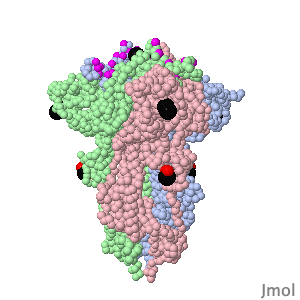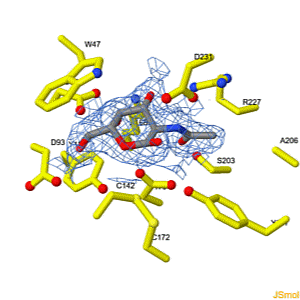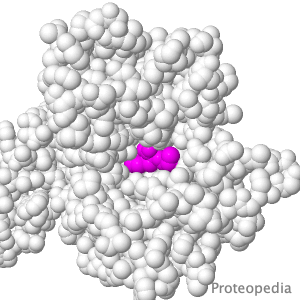Main Page
From Proteopedia
| Line 4: | Line 4: | ||
<span style="top:+0.2em; font-size:1.2em; padding-right:5px;float:right;">'''''ISSN 2310-6301'''''</span> | <span style="top:+0.2em; font-size:1.2em; padding-right:5px;float:right;">'''''ISSN 2310-6301'''''</span> | ||
</td></tr> | </td></tr> | ||
| + | |||
<tr> | <tr> | ||
<th style="padding: 10px;background-color: #33ff7b">Selected Pages</th> | <th style="padding: 10px;background-color: #33ff7b">Selected Pages</th> | ||
| Line 10: | Line 11: | ||
<th style="padding: 10px;background-color: #79baff">Education</th> | <th style="padding: 10px;background-color: #79baff">Education</th> | ||
</tr> | </tr> | ||
| + | |||
<tr> | <tr> | ||
<td style="padding: 5px;"> {{Proteopedia:Featured SEL/{{#expr: {{#time:U}} mod {{Proteopedia:Number of SEL articles}}}}}}</td> | <td style="padding: 5px;"> {{Proteopedia:Featured SEL/{{#expr: {{#time:U}} mod {{Proteopedia:Number of SEL articles}}}}}}</td> | ||
| Line 16: | Line 18: | ||
<td style="padding: 5px;"> {{Proteopedia:Featured EDU/{{#expr: {{#time:U}} mod {{Proteopedia:Number of EDU articles}}}}}}</td> | <td style="padding: 5px;"> {{Proteopedia:Featured EDU/{{#expr: {{#time:U}} mod {{Proteopedia:Number of EDU articles}}}}}}</td> | ||
</tr> | </tr> | ||
| + | |||
| + | <tr style="font-size: 1.2em; text-align: center;"> | ||
| + | <td style="padding: 10px;background-color: #33ff7b">Other Selected Pages</td> | ||
| + | <td style="padding: 10px;background-color: #dae4d9">More Art on Science</td> | ||
| + | <td style="padding: 10px;background-color: #f1b840">Other Journals</td> | ||
| + | <td style="padding: 10px;background-color: #79baff">More on Education</td> | ||
| + | </tr> | ||
| + | |||
| + | |||
| + | <tr style="font-size: 1.2em; text-align: center;"> | ||
| + | <td style="padding: 10px;>How to author pages and contribute to Proteopedia</td> | ||
| + | <td style="padding: 10px;></td> | ||
| + | <td style="padding: 10px;>How to get an Interactive 3D Complement for your paper</td> | ||
| + | <td style="padding: 10px;>How to author pages and contribute to Proteopedia</td> | ||
| + | </tr> | ||
| + | |||
</table> | </table> | ||
Revision as of 12:54, 18 October 2018
|
Because life has more than 2D, Proteopedia helps to understand relationships between structure and function. Proteopedia is a free, collaborative 3D-encyclopedia of proteins & other molecules. ISSN 2310-6301 | |||||||||||
| Selected Pages | Art on Science | Journals | Education | ||||||||
|---|---|---|---|---|---|---|---|---|---|---|---|
|
|
|
|
||||||||
| Other Selected Pages | More Art on Science | Other Journals | More on Education | ||||||||
| How to author pages and contribute to Proteopedia | How to get an Interactive 3D Complement for your paper | How to author pages and contribute to Proteopedia | |||||||||





